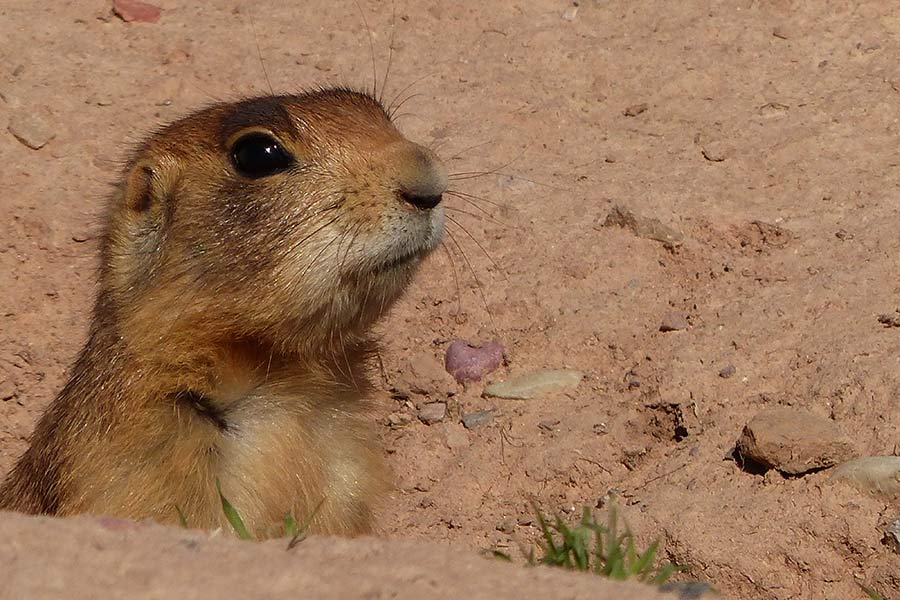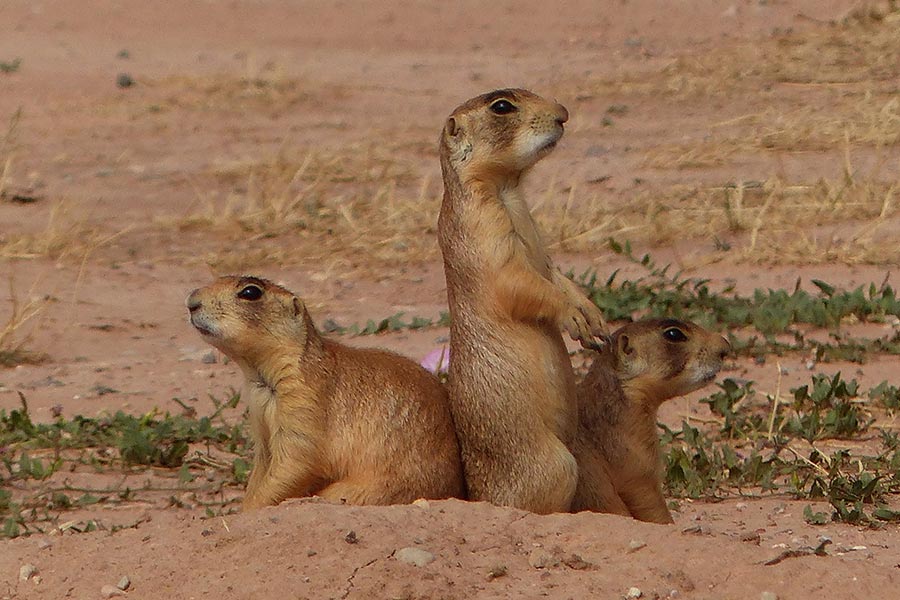≡
Protecting Utah prairie dog habitat
Property acquisition helps partners conserve prairie dogs and other wildlife
The Utah prairie dog, listed as federally threatened since 1984, has experienced tremendous population growth in the past decade. Although those numbers have declined in recent years due to drought, their overall recovery is remarkable. The majority of the increase — approximately 75 percent — occurred on private lands within Iron County. At the same time, the human population of Iron County has boomed, even outpacing Utah's high statewide growth rate. This increase in both prairie dogs and humans has resulted in conflict.
Although private lands constitute only 28 percent of Iron County, those lands have most of the habitat that prairie dogs prefer, which includes deep soil for burrowing. In 2012, a coalition of county, state, federal and private partners began searching for potential private lands that contained suitable prairie dog habitat.
In May 2018, Iron County acquired a 291-acre property — from a private seller — that included valuable habitat for the threatened Utah prairie dog. The U.S. Fish and Wildlife Service, the State of Utah, Species Protection Account funding and The Nature Conservancy jointly provided the $1 million needed for the property acquisition.
The county now holds title to the property, and The Nature Conservancy retains a conservation easement. Utah prairie dogs currently occupy the land and, in the coming years, their populations will grow as other prairie dogs are relocated from the county's unprotected areas. The Utah Division of Wildlife Resources will monitor the prairie dog populations on the property and will perform necessary habitat improvement and maintenance.
Under the Utah Prairie Dog Revised Recovery Plan, establishment of prairie dog populations on public lands — and on protected private lands — is crucial to the continued viability, eventual recovery and local public tolerance of the species. This recent acquisition will help increase Utah prairie dog populations on protected private land within Iron County.
This property acquisition is already helping Utah prairie dogs, and it will benefit mule deer and pronghorn in the near future. It also provides potential habitat for burrowing owls. The property borders other public lands owned by the DWR and the Bureau of Land Management, ensuring a large, connected block of protected wildlife habitat.









